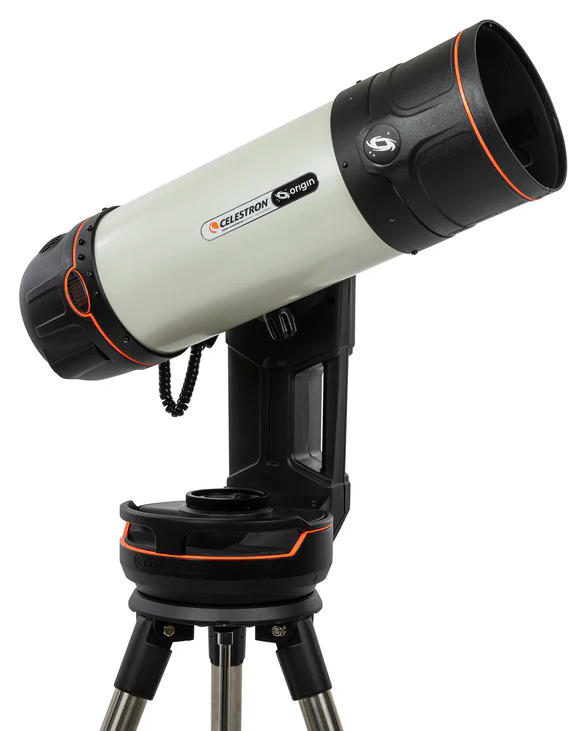 Celestron Origin, conceived in 2010 and introduced in early 2024, is described as an all-in-one "intelligent home observatory" that simplifies astrophotography and stargazing. The largest aperture smart telescope, its 152 mm Rowe-Ackermann Schmidt Astrograph (RASA) optical design, 335 mm focal length and f/2.2 focal ratio, is capable of capturing dim, deep-sky objects using shorter exposure times while its computerized GoTo alt-azimuth mount tracks and centers selected targets. And, with its integrated AI algorithms, Celestron says "The images you capture in seconds look better than what you'd see in the eyepiece of a much larger telescope under much darker skies."
Celestron Origin, conceived in 2010 and introduced in early 2024, is described as an all-in-one "intelligent home observatory" that simplifies astrophotography and stargazing. The largest aperture smart telescope, its 152 mm Rowe-Ackermann Schmidt Astrograph (RASA) optical design, 335 mm focal length and f/2.2 focal ratio, is capable of capturing dim, deep-sky objects using shorter exposure times while its computerized GoTo alt-azimuth mount tracks and centers selected targets. And, with its integrated AI algorithms, Celestron says "The images you capture in seconds look better than what you'd see in the eyepiece of a much larger telescope under much darker skies."
StarSense technology automates the initialization process by scanning the night sky, using star patterns to align itself and auto focuses in less than two minutes. The Celestron Origin Powered by SkySafari™ app installed on your smartphone or tablet is your guide to the night sky and how you control the system and view images since there is no eyepiece. Launch compass mode in planetarium view, point your smart device toward the night sky and simply select the celestial object you'd like to view (best choices are highlighted). Tonight's Best is a list of recommended targets that are based on observation time and your location. Or, create a list of objects and schedule Origin to image them autonomously while you're otherwise occupied—like sleeping. A live feed is displayed when you select Camera View and the Start Imaging button initiates 10-second exposures that are automatically processed and displayed. Origin supports multiple streams so you can share the live view with curious on-lookers and watch it on your smart TV.
The Sony IMX178 color CMOS sensor is located at the front of the telescope tube instead of the rear. The image sensor's 6.44 megapixels, 3096 x 2080 resolution and 1.27° x 0.85° wide field of view are well suited for galaxies, nebulae and star clusters and produce "sharp images to the edge." It is also the only smart telescope that is field upgradeable—wedge functionality is planned along with a camera upgrade in 2025.
AI algorithms stack and process each frame as it is captured in real time and also process the final stacked master. Celestron states that the Origin app is not generative AI so it doesn't attempt to colorize or otherwise add to the image. Instead, the applied process is comparable to the techniques used by experienced astroimagers. Controls are provided for manual image adjustment and, for those who prefer to manually post process their images, raw files are available. Shared image file formats are high resolution PNG for Android and compressed JPG for iOS.
The integrated drawer accepts 1.25 in. and 2 in. astroimaging filters allowing you to enhance performance for nighttime and daytime observing sessions. A dual purpose lens shade/dew shield is removable and dew is further mitigated by an automatically controlled heating ring in the front lens. Two fans pull air through wire mesh screened vents—one fan cools the optics while the second is used for the electronics. The 97.9 Wh battery powers Origin for 6+ hours. The assembled system including the tripod is 24 in. x 26 in. x 48 in. and weighs 41.6 lbs. Specifications are summarized below.
To learn more about the Celestron Origin and for upated information, visit the Celestron website.

Image Courtesy of Celestron
Product Overviews, which are based solely on manufacturer-supplied data, have been reviewed by the manufacturers, provide significantly more detail than Product Reviews and do not include personal opinion.